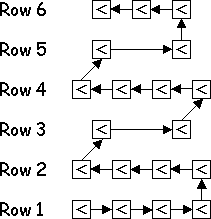| Rope color | Length (ft) | How many |
|---|---|---|
| Black | 10 | 30 |
| Blue | 15 | 6 |
| Yellow | 21 | 4 |
| Green | 27 | 2 |
| Red | 32 | 4 |
NOTE: This is pretty much just a file full of tips and tricks. All you really need is the map.
| Rope color | Length (ft) | How many |
|---|---|---|
| Black | 10 | 30 |
| Blue | 15 | 6 |
| Yellow | 21 | 4 |
| Green | 27 | 2 |
| Red | 32 | 4 |

|
|